


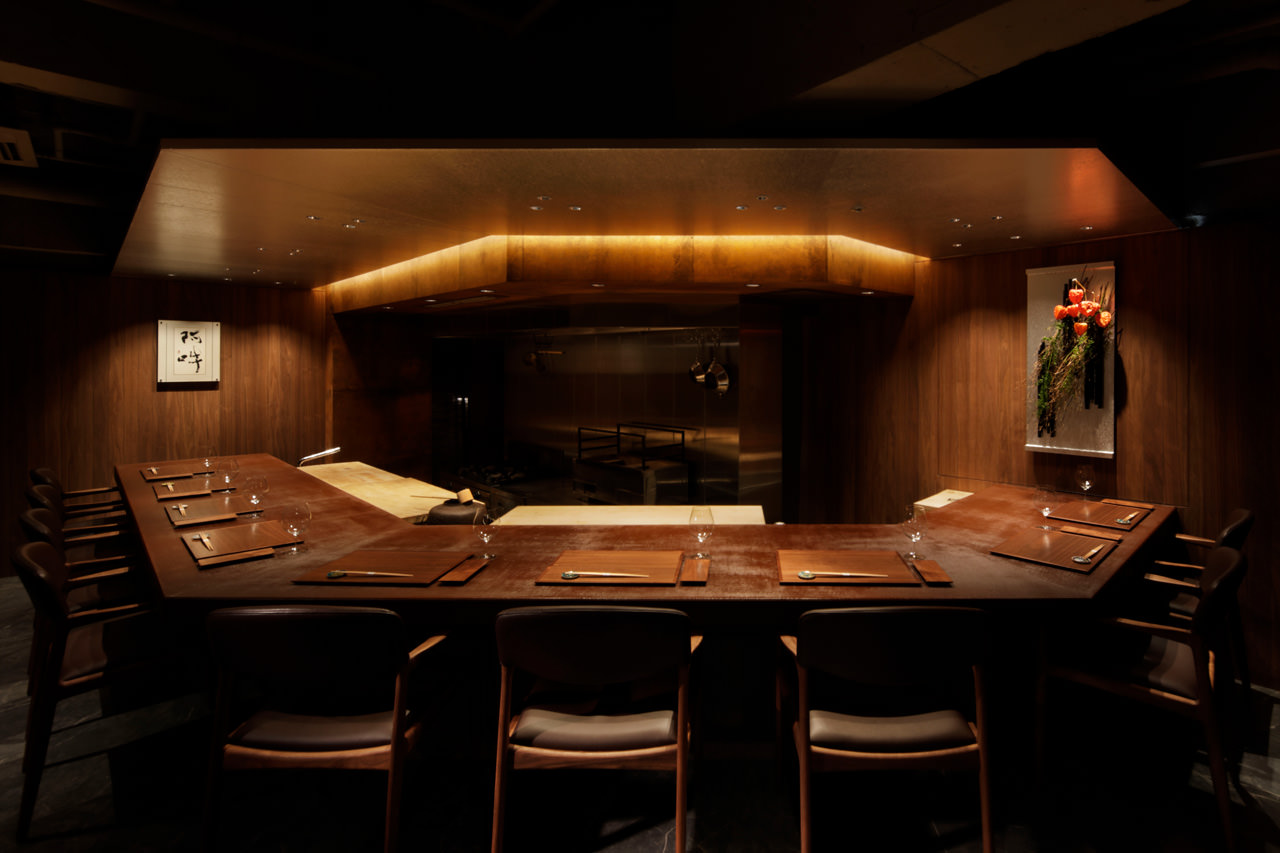

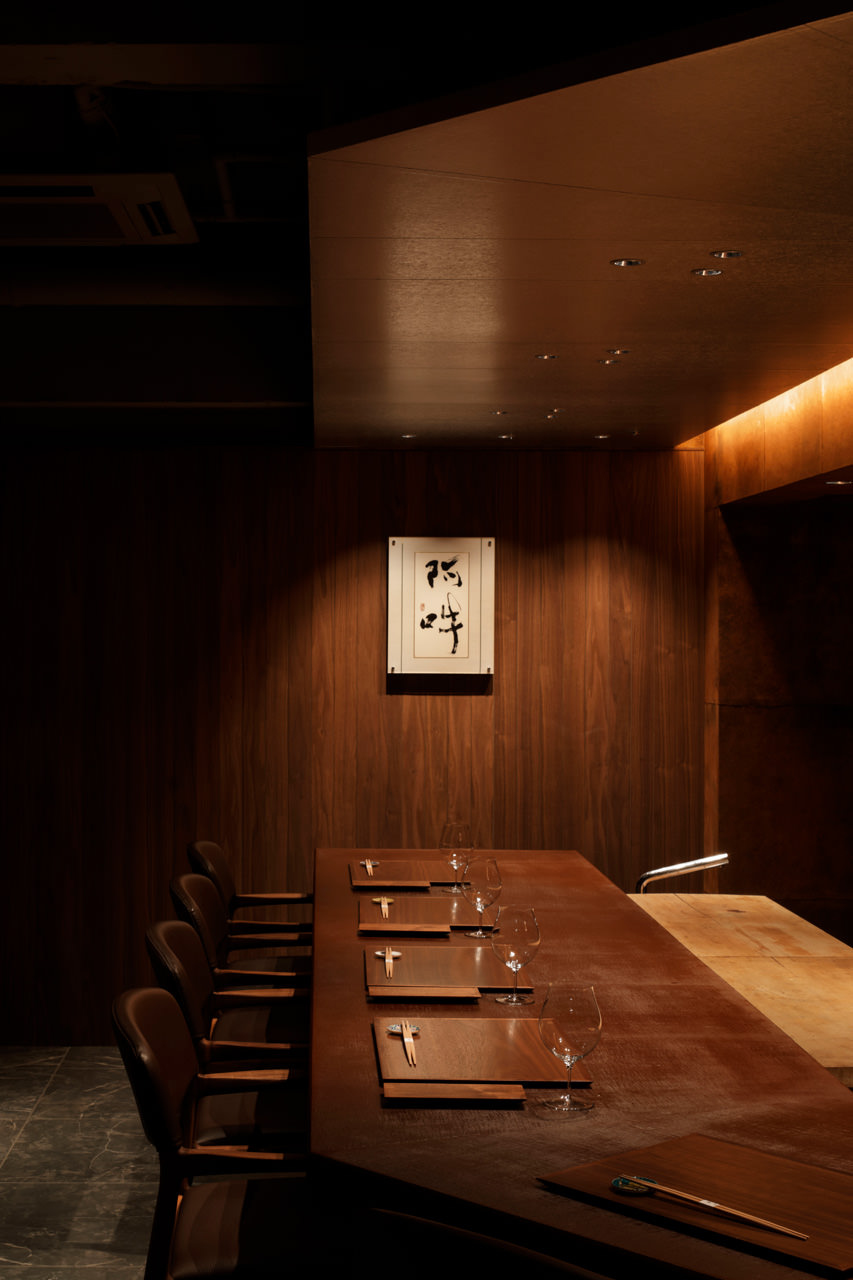
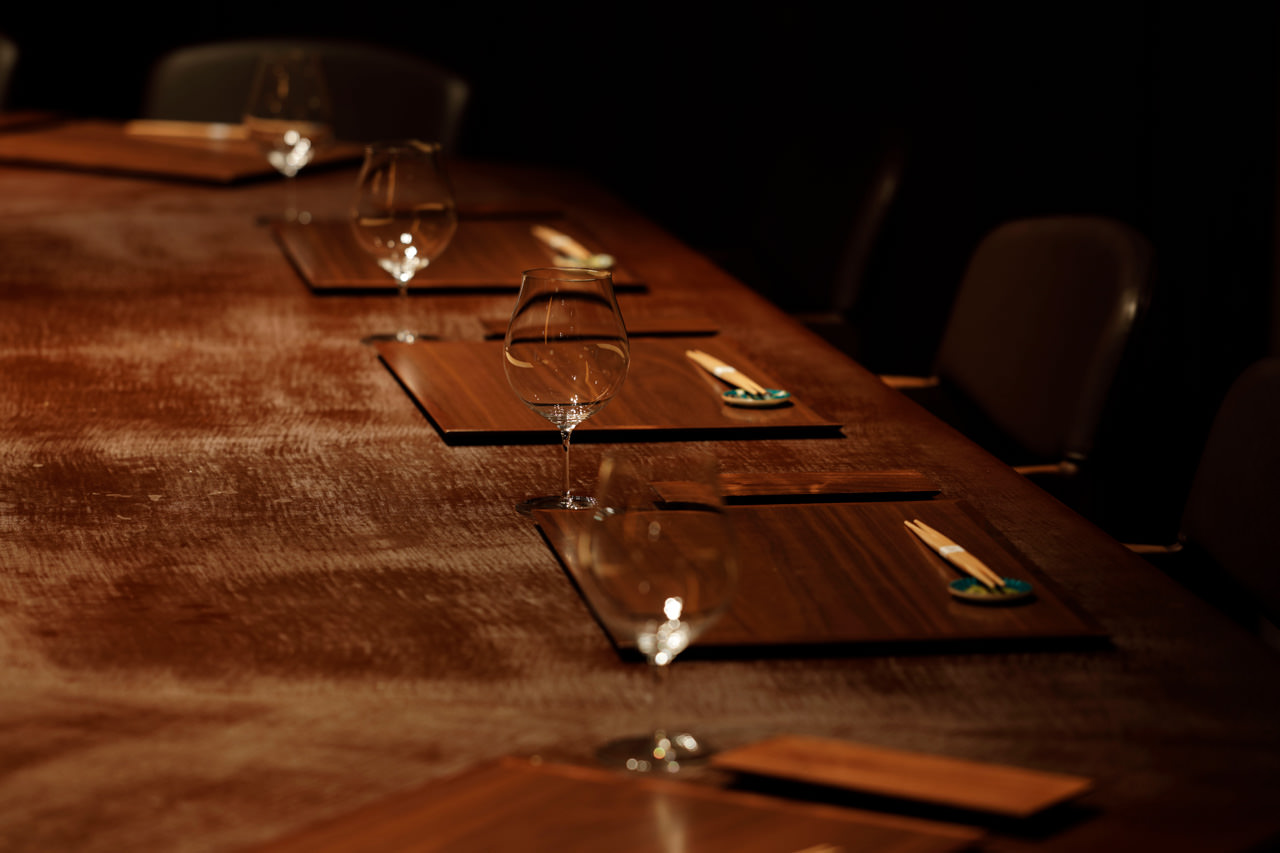
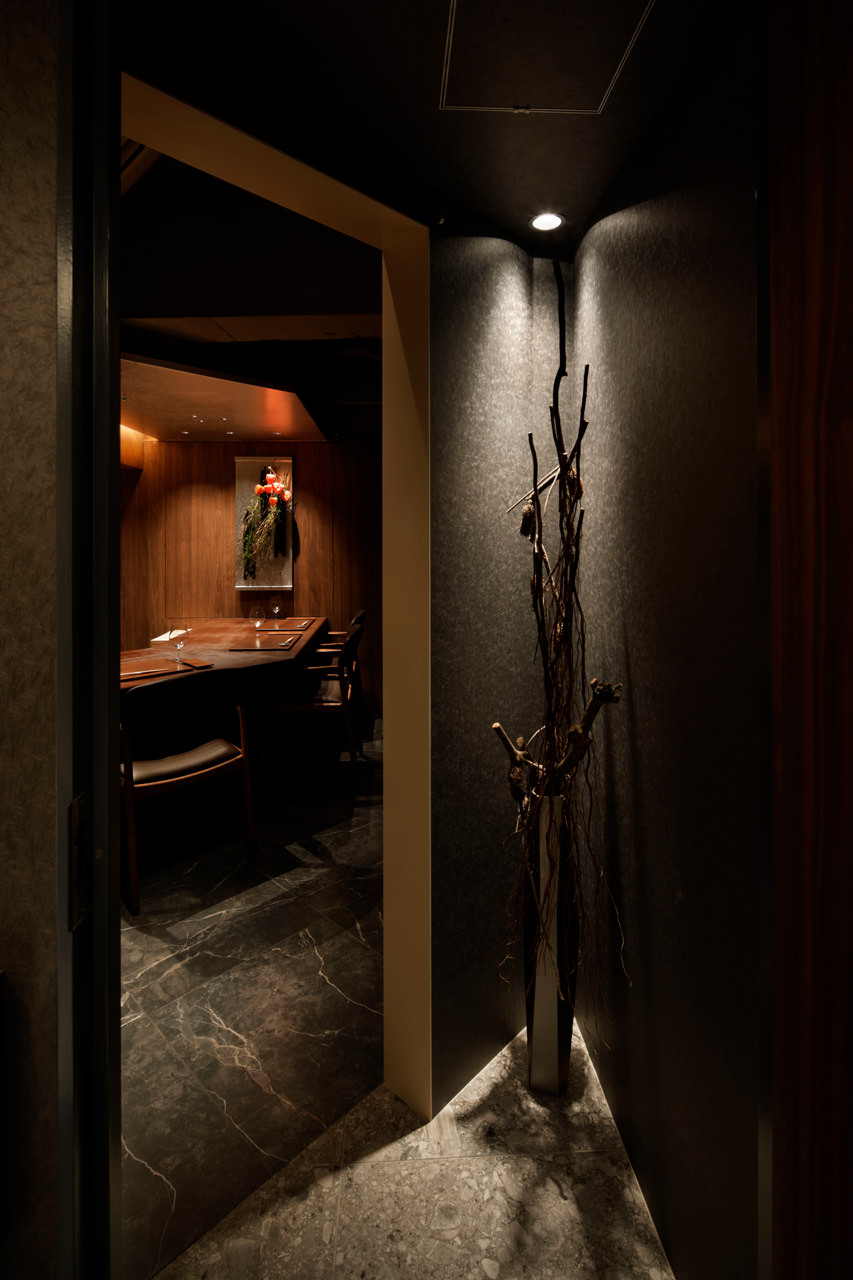
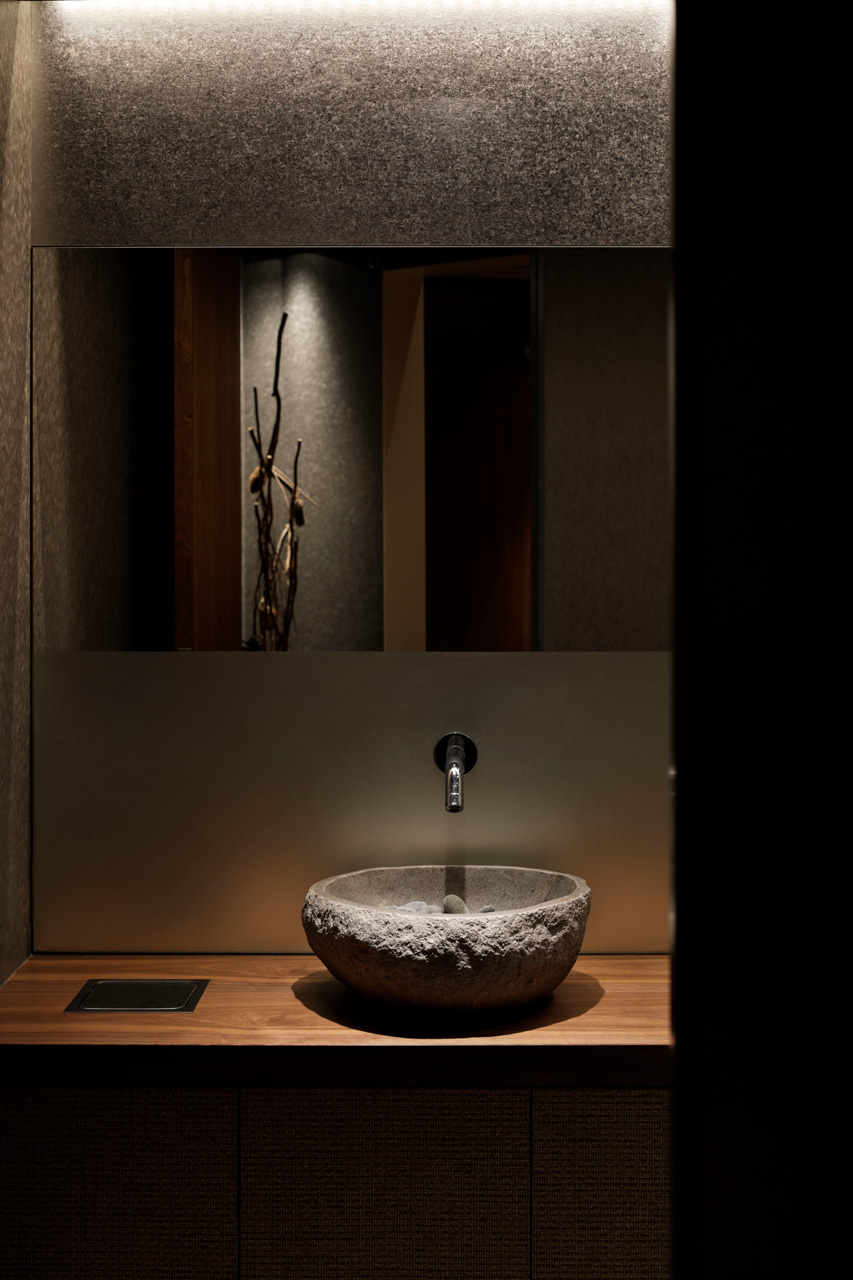
芦屋でお店を構え、たくさんのお客様を持たれている料理人さんが北新地に移転されたお店のデザイン。
日本の食材(素材)を最大限に活かす料理を特徴とすることから呼応するように「素材」をテーマに空間作りを考えました。日本を感じる伝統に裏打ちされた和の素材をメインとし、各所に現代の素材をフュージョンさせ、居心地の良さと新しい空気感を感じてもらえるように演出しました。
主役である料理の舞台となるカウンターには歴史のある伝統工芸京漆器の工法などにも共通する布着せ工法を用いた漆塗の仕上げを施しています。京都の漆職人さんの手作業によって丁寧に制作されました。料理人さんの作業スペースの廻りには漆和紙をを採用しました。ユネスコにも指定された岐阜の美濃和紙をベースに伝統工芸士の漆職人が丁寧に塗って完成する漆和紙は使い込むほどに味が出るだけでなく防水性も高く、水回りにも適していることから採用しました。
その他にも京都の職人さんにより製作された和紙、福井の越前和紙や広島のアルミ箔等、全国の昔からある技術を用いて作られた素材をあらゆる箇所にちりばめました。
料理と空間、ありとあらゆる日本のこだわり、良さを存分に味わい、料理人さんの心のこもった渾身の料理を感じて頂ける空間を目指しました。
A chef who has a restaurant in Ashiya and a lot of customers This is a design for a restaurant that was relocated to Kitashinchi.
As his cuisine is characterized by maximizing the use of Japanese ingredients The theme of the space was "ingredients" to correspond with this theme. The main theme of the restaurant is Japanese ingredients that are backed by the tradition of Japan. I wanted to create a space that was both comfortable and fresh. The main theme of the restaurant is "ingredients".
The counter, which is the stage for the star of the show, is decorated with The counter, which serves as the stage for the star of the show, is made of lacquer using the same method as that used in Kyoto lacquerware, a traditional craft with a long history. The counter, which is the stage for the main course, is finished with lacquer using the Nunoshise method, which is common to the traditional Kyoto lacquerware method. It was carefully crafted by hand by lacquer ware artisans in Kyoto. Japanese lacquer paper is used around the cook's work space. Based on Gifu's Mino Washi paper, which is also designated by UNESCO. The more you use it, the better it tastes. The more you use it, the better it tastes, and it is also highly waterproof. The more you use it, the more it becomes tasty, and it is also waterproof, making it suitable for use around water.
We also used washi made by craftsmen in Kyoto, Echizen washi from Fukui and Hiroshima. We also used traditional techniques from all over Japan, such as Japanese paper made by craftsmen in Kyoto, Echizen paper from Fukui, and aluminum foil from Hiroshima. In addition, materials made using traditional techniques from all over Japan, such as Japanese paper made by artisans in Kyoto, Echizen Japanese paper from Fukui, and aluminum foil from Hiroshima, were used throughout.
We hope that you will enjoy the food and the space, and fully appreciate all that Japan has to offer. We aimed to create a space where you can fully enjoy the cuisine and space, and feel the chef's heartfelt, full-bodied cooking.

真白

MIO CLINIC OSAKA

LUV FISH?東京

NTT Data XAM Technologies Corporation Osaka

鮨場 七十二侯

KOU

レオン都市開発 大阪駅前オフィス

NICHINEN ENTRANCE

魚坐

緒乃

UNIVERSAL BUILDING MANAGEMENT co.,ltd TKOYO OFFICE

ALLEY SUPERNOVA

悦三郎

SaLe&PePe

CO&CO KYOTO

ESPICE

天ぷら うらかみ

ISN’T DOJIMA

isn't kyoto

AROMA CURLANCURLAN

Brocante Cafe 0 alto

Traditional Japanese Patisserie
菓楽

KITASHINCHI-KAI

NTT DATA ENGINEERING SYSTEMS
designlabo ANNEX

wine&coffee bar Giardino

SHIAWASE PHARMACY

UNIVERSAL BUILDING MANAGEMENT co.,ltd

NTT DATA ENGINEERING SYSTEMS
AM designlabo

北新地 福多亭

The Vintage

VIVACCHUS

福島 もう利

ワインバーD

MILLE
CARESSES

宝塚大劇場
フードコートリノベーション

緑地公園R邸
リノベーション

NTT DATA ENGINEERING SYSTEMS
RP TECNICAL CENTER OSAKA

宝塚ホテル ベーカリー&カフェ
三木SA店

三木サービスエリア
レストラン棟

Sushisho-NAKAGAWA

心斎橋アクロスビル
サインリノベーション

堀江マンション
インテリアプロデュース

井上文尚堂